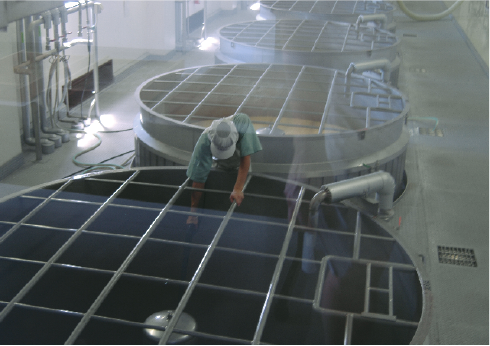
Features
Agronomy
Fertility and Nutrients
Integrated management improves profitability
High seeding rate, early weed removal and competitive hybrids contribute to reliable, consistent canola yields.
November 29, 2007 By Bruce Barker
With the continuing adoption of hybrid canola, direct seeding, and banding
fertilizer, canola production practices have changed since the 1980s. So, how
do these impact canola yield? Neil Harker, a research scientist at Agriculture
and Agri-Food Canada's Lacombe Research Centre, conducted two studies to determine
the effect of fertilizer rate, seeding rate and time of weed removal on hybrid
and open-pollinated canola varieties on yield. While the affects were more evident
in some years than others, trends were evident and Harker provides recommendations
for integrated canola management.
| Figure 1: Canola seed yield and weed growth in an integrated crop management system. Source: AAFC Lacombe. |
 |
The experiments were conducted and repeated at Lacombe and Lethbridge, Alberta.
Canola was direct seeded into wheat or barley stubble at each location in each
year. Canola varieties were hybrid (InVigor 2153) and open-pollinated (Exceed)
Liberty Link (glufosinate tolerant). Crop seeding rates were 100, 150 and 200
seeds per square metre (on a weight basis these seeding rates averaged 4.9,
7.4 and 9.9 pounds per acre for InVigor 2153, and 3.2, 4.7 and 6.3 pounds per
acre for Exceed). Both cultivars received the same fungicide/insecticide seed
treatment. Weed removal timings were at the two, four, or six leaf stage of
canola.
Canola was seeded in early May with a ConservaPak air-seeder at Lacombe (12
inch row spacing and on-row packing) and with a double-disc press drill at Lethbridge
(nine inch row spacing). Nitrogen, P2O5,
K2O and S fertilizers were side-banded at the time of
seeding according to soil test recommendations. A single treatment of glufosinate
was applied at the target canola leaf stage (two, four, or six leaf). Glufosinate
treatments usually began in early June and were completed approximately three
weeks later. In some cases, InVigor canola developed significantly faster than
Exceed and required treatment two to four days earlier than Exceed for a given
leaf stage.
Seeking the best combination
Harker says that the most striking weed effects were in response to time of
weed removal. Clearly, the highest weed biomass occurred with weed removal at
the six leaf stage of canola. He notes that glufosinate effectiveness in canola
can decrease rapidly at advanced weed growth stages. "Perhaps more importantly,
variability in weed biomass was also greatest when weeds were removed after
the four leaf stage," Harker says.
The studies also showed that weed biomass is usually lowest and least variable
when early weed removal is combined with higher than normal seeding rates. Delaying
weed removal until the six leaf stage of canola reduced yield by four percent
for both cultivars at both sites. Higher yield after early weed removal is consistent
with results from other recent studies in canola.
 |
| High seeding rates, early weed removal and competitive hybrids gave almost $100 per acre higher return. |
Higher yields and net returns
Canola seed yield was significantly influenced by all factors in the study.
InVigor 2153 had 22 percent greater yield than Exceed at all sites. Seeding
at 100 seeds per square metre had lower yields, by seven percent at all sites,
than higher seeding rates. The low seeding rates also increased days to maturity
by one to two days.
Harker says typical seeding rates for canola in western Canada would be close
to 100 seeds per square metre (4.9 pounds per acre) for cultivars like InVigor
2153, and about 150 seeds per square metre (4.7 pounds per acre) for a cultivar
like Exceed. Therefore, the high seeding rate for InVigor 2153 (200 seeds per
square metre, 9.9 pounds per acre) would be substantially greater than the current
practice.
The highest yielding combinations were achieved with the hybrid variety seeded
at rates of 150 seeds per square metre or greater, with weed removal at the
two leaf stage of canola. Combining the better variety with the highest seeding
rate and the earliest time of weed removal led to a 41 percent yield increase
compared to the combination of the weaker cultivar, the lowest seeding rate
and the latest time of weed removal. "These results suggest that producers
may combine vigorous cultivars with optimal seeding rates and early weed removal
to enhance their opportunities for high yields," explains Harker.
When conducting an economic analysis, Harker found that the net benefit from
the optimal treatment combination versus the poorest treatment combination is
estimated at $96.50 per acre with an additional seed investment cost of 12.38
per acre.
Harker says future studies should address how other agronomic factors, such
as seeding date and soil fertility, could be combined at optimal levels with
some of the factors that he investigated. He says it will also be important
to consider the feasibility of the practices recommended here from an economic
as well as an agronomic perspective.
For reliable, consistent canola yields:
- Fertilize to soil test recommendations.
- Remove weeds early to take full advantage of other inputs such as fertilizer.
- Seed higher rates rather than lower rates of canola seed to achieve plant
stands that will compete with weeds. - Hybrid canola may optimize yields at higher than recommended fertilizer
rates, based on other trials in western Canada.